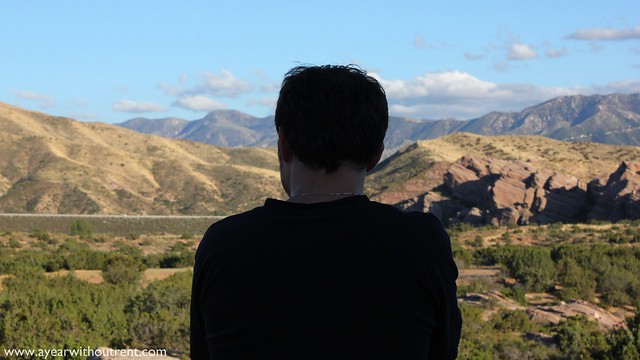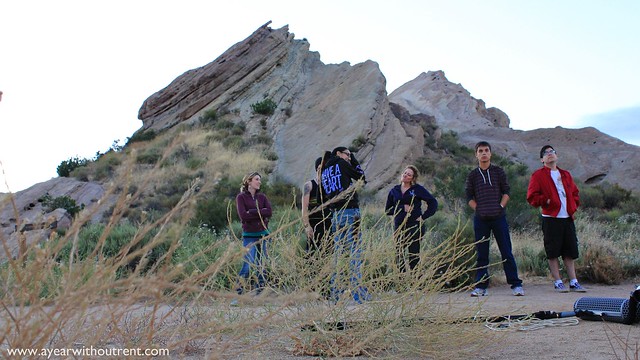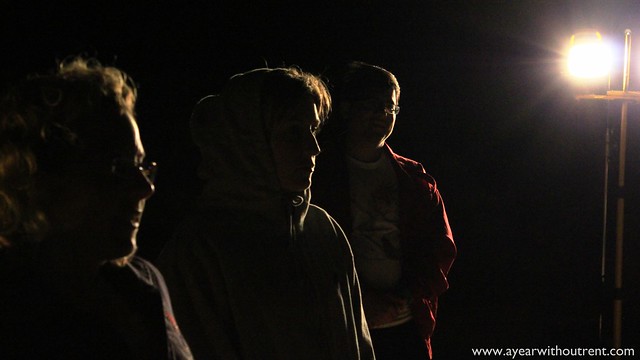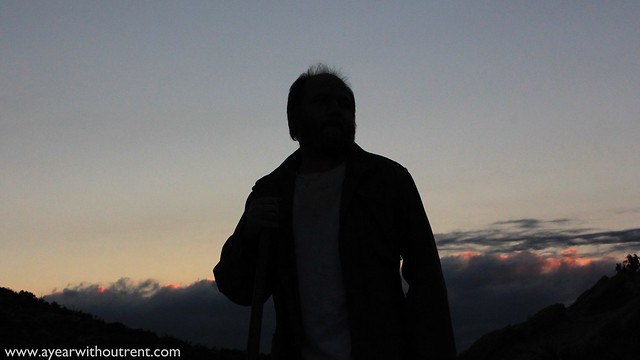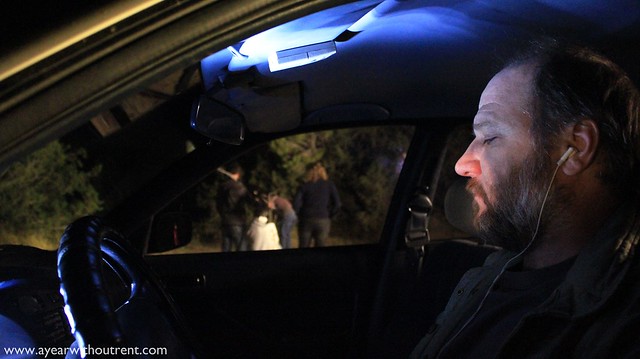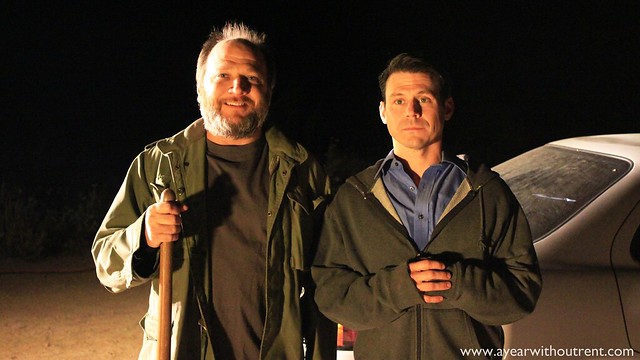
We’re combining days here for the first time on A Year Without Rent for one very simple reason: nothing happened on day 7. Well that’s not completely true. We filmed part of the movie. It wasn’t like day 7 was a day off or anything, even if Paul Osborne said that some of us probably didn’t need to show up. The plan was to put Paul, Patrick Day, and [actress] in a car and have them drive around. Basically, just car interiors. Not only did he not need us, but there wasn’t exactly anywhere to put us.
But I’ve been doing this a long time, and I know that no day of filming ever goes according to plan. It’s better to be available and not needed than to be needed and not available.
Which is how Joe Pezzula, Katie Schwartz, Tiffany J. Shuttleworth, our new PA Bunee Tomlinson, and I ended up sitting in an RV in a grocery store parking lot for hours upon end, playing UNO.
It’s about as exciting as it sounds.
Every couple of hours the picture car would swing back through, but beyond that there wasn’t all that much to do. Oh sure, we all brought work to do, but none of it got touched, which is kind of a shame, as it seemed like a pretty good opportunity to get a lot done.
I know what you’re thinking: you need an RV for that? And you’re right. We don’t need an RV for that. A RV for that would be excessive.
Day 8 of FAVOR is a night shoot in the desert with practical effects (more blood!), a generator (ooohhh), and even a second PA. More specifically, we’re shooting at Vazquez Rocks. You’ve seen things filmed there. GALAXY QUEST shot there, as did STAR TREK (both older variations and the lens flare-tastic J.J. Abrams reboot), and it’s easy to see why. It’s a stunning landscape, punctuated by the signature pointed rock formation.
Naturally, as soon as we show up, every single member of the cast and crew starts climbing up on the rocks because, let’s face it, deep down we’re all just little kids.
We have that same lighting setup, of course, only here we really need the extra power from the work lights. The first thought is to set up some 3 point lighting, but it becomes clear rather quickly that the desert is just going to swallow the lights up. But, if we cluster most of them in the same spot and use one of the 500W LEDs to throw in some fill, it more or less works. Add a battery powered light we’ve gelled to match the others and we’ve got something.
The generator, of course, is our source of electricity. The production has spent the extra rental money on the silent model. It’s anything but. We wrap what we can find around it, but it barely makes a dent. Finally, we have to get a little creative in re-routing our cables until we can put the generator far enough away with enough things in-between it and us to muffle the sound enough. Then, since a generator won’t last forever, we’re on the clock.
It takes exactly no time for the dust and sand to get everywhere. Our lights are just powerful enough to light the scene, but they’re really hot on the bumper of the picture car. We tweak, but it doesn’t do all that much. Eventually, Paul just figures out a camera angle that’ll frame out most of the issue. More often than not, if you’ve got a lighting issue that just isn’t working, the best solution often involves re-thinking your set-ups. Maybe the camera can move 3 feet to the left and still accomplish exactly the same thing.
One of our scenes involves the actors digging in some dirt in order to [REDACTED]. Only, the people in charge of the desert do not allow you to dig in their dirt. You have to bring in your own dirt, and it has to be a specific type of dirt too (because a desert doesn’t have enough dirt). You can imagine how annoying this is. We need maybe 3 wheelbarrows full of dirt–tops–but the smallest amount we can order ends up being enough to fit in the back of a pickup truck. That’s a lot of extra dirt. We have one shovel (which is actually a prop) and no wheelbarrow (but we do have a plastic bin). This is why you always want a few extra people on set. The 2 PA’s do most of the shoveling, but we all chip in a little here and there while doing other things. This is one of the big differences in scale of films. On a bigger film, there’d be a department doing this, but on a small indie everyone works on it, from a PA to the director. It has to get done.
Shooting in the desert proves to be a little more difficult, so Paul shoots slower than he has other days, but he’s still on schedule. The guy’s a machine. Part of me is impressed and part of me is terrified that we’re going to end up not having nearly enough good footage. But, Paul’s happy with what he’s getting, and if he’s happy than you have to trust he’s getting what he wants. It’s just, I can’t remember a shoot where we wrapped early every single day. It’s madness.
He does it again in the desert, and just as he calls “wrap”, the lights flicker, then go out. The generator is out of fuel.
Maybe Paul isn’t so crazy after all.
Filmmaker Lucas McNelly is spending a year on the road, volunteering on indie film projects around the country, documenting the process and the exploring the idea of a mobile creative professional. You can see more from A Year Without Rent at the webpage. His feature-length debut is now available to rent on VOD. Follow him on Twitter: @lmcnelly.
